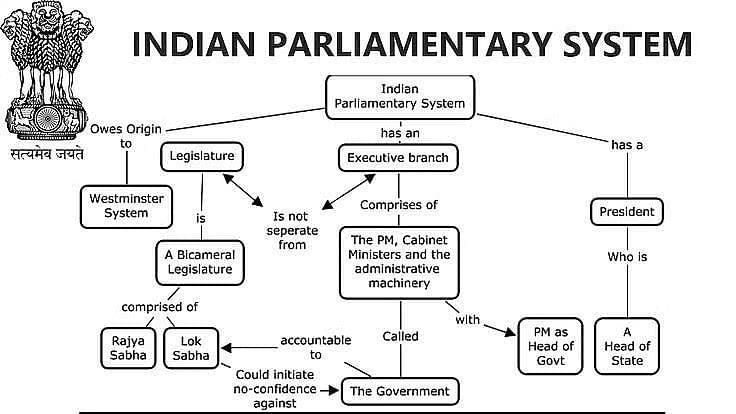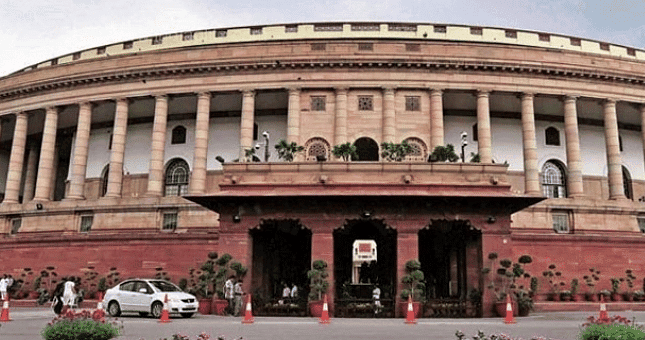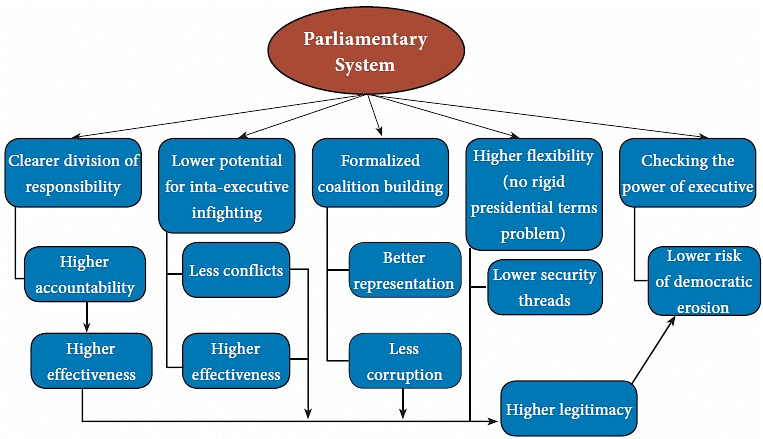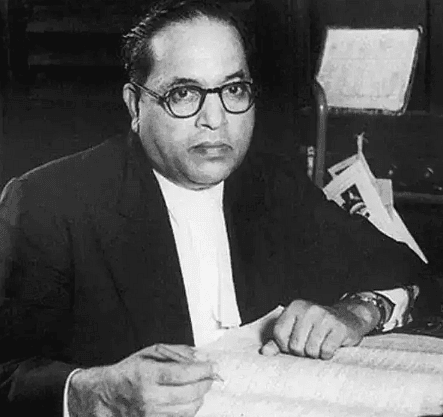Laxmikanth Summary: Parliamentary System | Indian Polity for UPSC CSE PDF Download
Introduction
- The Constitution of India establishes a parliamentary form of government at both the central and state levels.
- Articles 74 and 75 focus on the parliamentary system at the Centre, while Articles 163 and 164 pertain to the states.
- Modern democratic governments are categorized into parliamentary and presidential systems based on the relationship between the executive and legislative branches.
- In a parliamentary system, the executive is accountable to the legislature for its actions and policies.
- This system is also known as cabinet government, responsible government, or the Westminster model. It's prevalent in countries like Britain, Japan, Canada, and India.
- On the other hand, a presidential system features an executive that is not accountable to the legislature and has a fixed term of office.
- Countries like the USA, Brazil, Russia, and Sri Lanka employ presidential systems.
- Ivor Jennings referred to the parliamentary system as the 'cabinet system' because the cabinet holds central power.
- The Prime Minister, traditionally seen as 'first among equals' within the cabinet, has gained significant influence in recent times, leading to the term 'prime ministerial government.'
- This shift in power dynamics holds true both in Britain and in India.

Features of Parliamentary Government
Nominal and Real Executives- The President serves as the nominal executive, holding a ceremonial position as the head of state.
- The Prime Minister acts as the real executive, leading the government and making day-to-day decisions.
- Article 74 establishes a council of ministers under the Prime Minister's leadership to assist and advise the President, with the President obligated to follow their advice.
Majority Party Rule
- The political party securing majority seats in the Lok Sabha forms the government.
- The Prime Minister is appointed from the majority party's leader, and other ministers are appointed based on the Prime Minister's advice.
 Lok Sabha
Lok Sabha
Collective Responsibility
- Ministers collectively bear responsibility to Parliament, particularly to the Lok Sabha.
- The principle implies that the Lok Sabha can remove the entire ministry through a vote of no confidence.
Political Homogeneity
- Ministers usually belong to the same political party, ensuring ideological coherence.
- In coalition governments, ministers adhere to consensus decisions.
Double Membership
- Ministers serve as members of both the legislature and the executive, requiring parliamentary membership.
- Failure to maintain parliamentary membership leads to cessation of ministerial position as per constitutional provisions.
Leader of the Prime Minister
- The Prime Minister holds leadership roles in the council of ministers, Parliament, and the ruling party.
- Their significant role is crucial for the functioning of the government.
Dissolution of the Lower House
- The Prime Minister can advise the President to dissolve the Lok Sabha, leading to fresh elections.
- This power allows the executive to dissolve the legislature before its term ends.
Secrecy
- Ministers operate under the principle of secrecy, unable to disclose information about proceedings, policies, and decisions.
- They take an oath of secrecy administered by the President.
Features of Presidential Government
- The American President has a dual role, serving as both the head of state and the head of government.
- Presidents are elected through an electoral college for a fixed four-year term and can only be removed by impeachment for severe unconstitutional acts.
- Governance is facilitated with the assistance of a cabinet or a smaller advisory body, known as the "Kitchen Cabinet," consisting of non-elected departmental secretaries.
- The President and their secretaries are not accountable to Congress for their actions and do not hold membership or attend its sessions.
- The President lacks the authority to dissolve the House of Representatives, the lower house of Congress.
- The American presidential system is grounded in the doctrine of separation of powers, where the legislative, executive, and judicial branches operate independently.
Merits of the Parliamentary System

- Parliamentary system fosters a cooperative relationship between the legislative and executive branches.
- Both branches work together as the executive is a part of the legislature, reducing conflicts.
Responsible Government
- Ministers in the parliamentary system are accountable to the Parliament for their actions.
- Parliamentary control mechanisms like question hours and no-confidence motions ensure accountability.
Prevents Despotism
- Power is distributed among a group of ministers rather than concentrated in one individual, preventing authoritarian rule.
- Executive's accountability to Parliament, including the possibility of removal via a no-confidence motion, acts as a check against despotism.
Ready Alternative Government
- In the event of the ruling party losing majority support, the opposition can be invited to form a government without the need for fresh elections.
- This ensures continuity of governance and provides a smooth transition of power.
Wide Representation
- The parliamentary executive includes ministers representing various sections and regions, ensuring diverse representation in government.
- The Prime Minister considers representation while selecting ministers, facilitating inclusivity in decision-making.
Demerits of the Parliamentary System
Unstable Government- Parliamentary system lacks stability as governments rely on majority support from legislators, making them vulnerable to no-confidence motions or political defections.
- Examples include short-lived governments headed by various Prime Ministers like Morarji Desai and Chandra Sekhar.
No Continuity of Policies
- Parliamentary systems often lack continuity in long-term policies due to government tenure uncertainties.
- Changes in ruling parties frequently lead to policy reversals, as seen with the Janata and Congress governments in India.
Dictatorship of the Cabinet
- When the ruling party holds a significant majority in Parliament, the cabinet may wield autocratic powers.
- This phenomenon, observed during the eras of Indira Gandhi and Rajiv Gandhi, allows for potential executive tyranny.
 Morarji Desai
Morarji Desai
Against Separation of Powers
- In parliamentary systems, the legislature and executive branches are closely intertwined.
- The cabinet, acting as both legislative leader and executive, challenges the principle of separation of powers, creating a fusion of authority.
Government by Amateurs
- Parliamentary systems may lack administrative efficiency as ministers may not possess expertise in their fields.
- The Prime Minister's selection of ministers is limited to parliamentary members, potentially overlooking external talent.
- Ministers often dedicate significant time to parliamentary duties, cabinet meetings, and party obligations, impacting administrative effectiveness.
Reason For Adopting the Parliamentary System
A request was made to adopt the US presidential system of government in the Constituent Assembly. However, the founding fathers opted for the British parliamentary system for the following reasons:
Familiarity with the System
- Constitution-makers were acquainted with the parliamentary system from British rule in India.
- K.M. Munshi argued that India's governance traditions had become parliamentary over several decades, advocating against adopting a new system.
Preference for More Responsibility
- Dr. B.R. Ambedkar highlighted the importance of balancing stability and responsibility in a democratic executive.
- He noted that the British parliamentary system offered more responsibility, albeit with less stability, compared to the American presidential system.
 Dr. B.R. Ambedkar
Dr. B.R. Ambedkar
Need to Avoid Legislative-Executive Conflicts
- Framers of the Constitution aimed to prevent conflicts between the legislature and executive, common in the US presidential system.
- They believed such conflicts could hinder India's democratic progress and opted for a system conducive to national development.
Nature of Indian Society
- India's diverse and complex societal makeup influenced the choice of the parliamentary system.
- The system provided better representation for various sections, interests, and regions, fostering national unity and inclusivity.
Distinction Between Indian and British Models
- India operates under a republican system, contrasting the British monarchy where the Head of State (King or Queen) holds a hereditary position.
- Unlike Britain's sovereignty of Parliament, India's Parliament has limited powers due to a written Constitution, federalism, judicial review, and protection of fundamental rights.
- In Britain, the Prime Minister must be a member of the House of Commons, while in India, they can belong to either house of Parliament.
 British Monarchy Symbol
British Monarchy Symbol - Ministers in Britain are typically members of Parliament, whereas in India, non-members can serve as ministers for a maximum of six months.
- Unlike Britain's legal responsibility of ministers, India lacks such a system, and ministers aren't required to countersign official acts of the Head of State.
- The British system features a "shadow cabinet" to prepare opposition members for future ministerial roles, a concept absent in India's parliamentary system.
|
142 videos|779 docs|202 tests
|
FAQs on Laxmikanth Summary: Parliamentary System - Indian Polity for UPSC CSE
| 1. What are the key features of a Parliamentary Government? |  |
| 2. What are the main features of a Presidential Government? |  |
| 3. What are some merits of the Parliamentary System? |  |
| 4. What are some demerits of the Parliamentary System? |  |
| 5. What is the reason for adopting the Parliamentary System? |  |






















